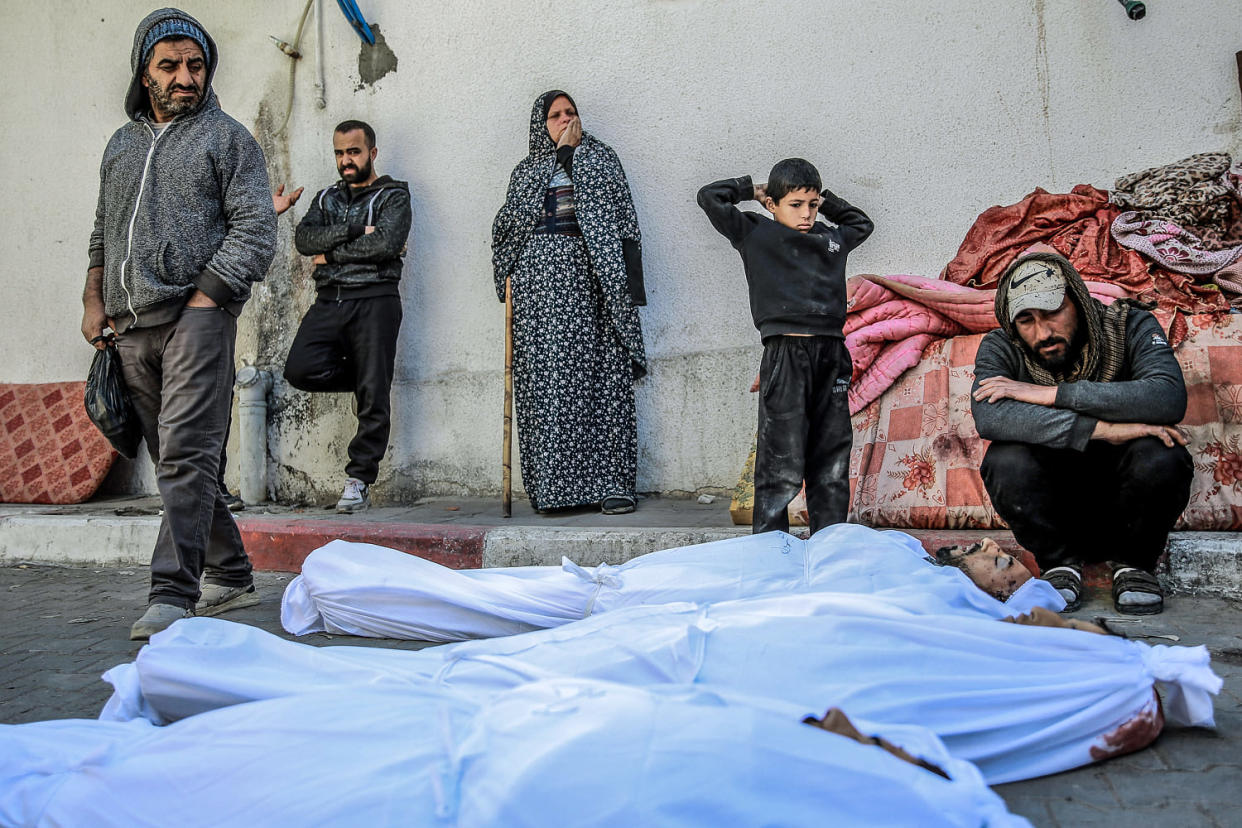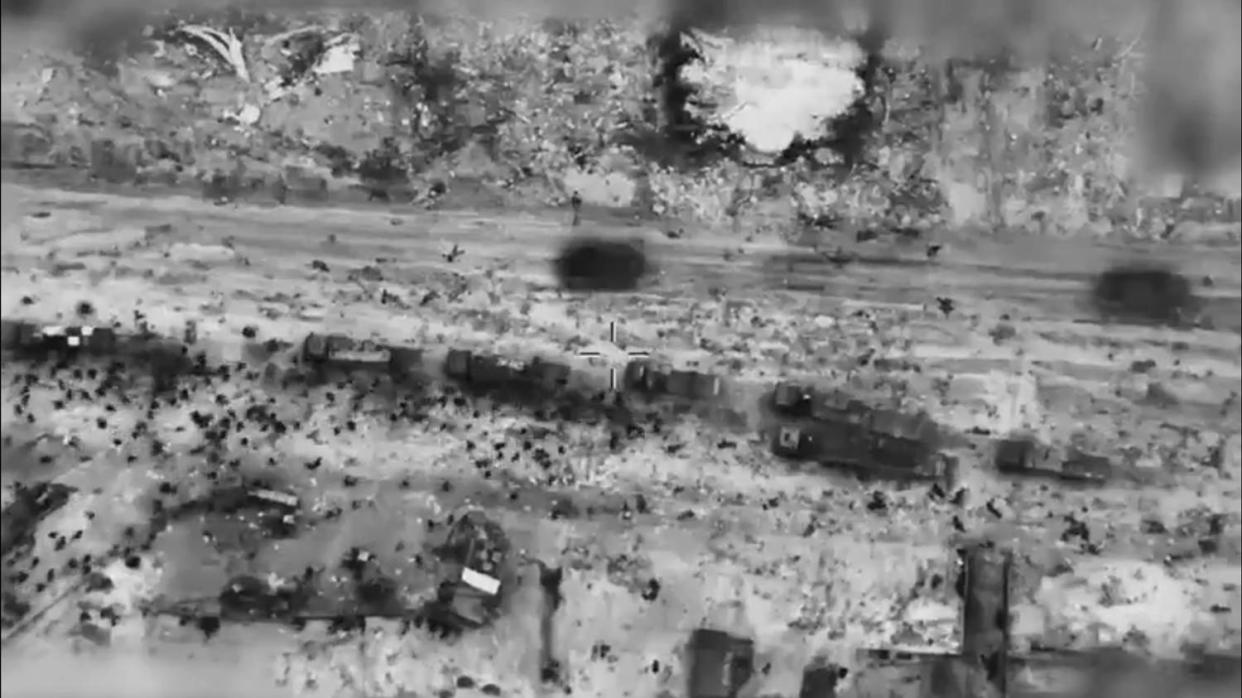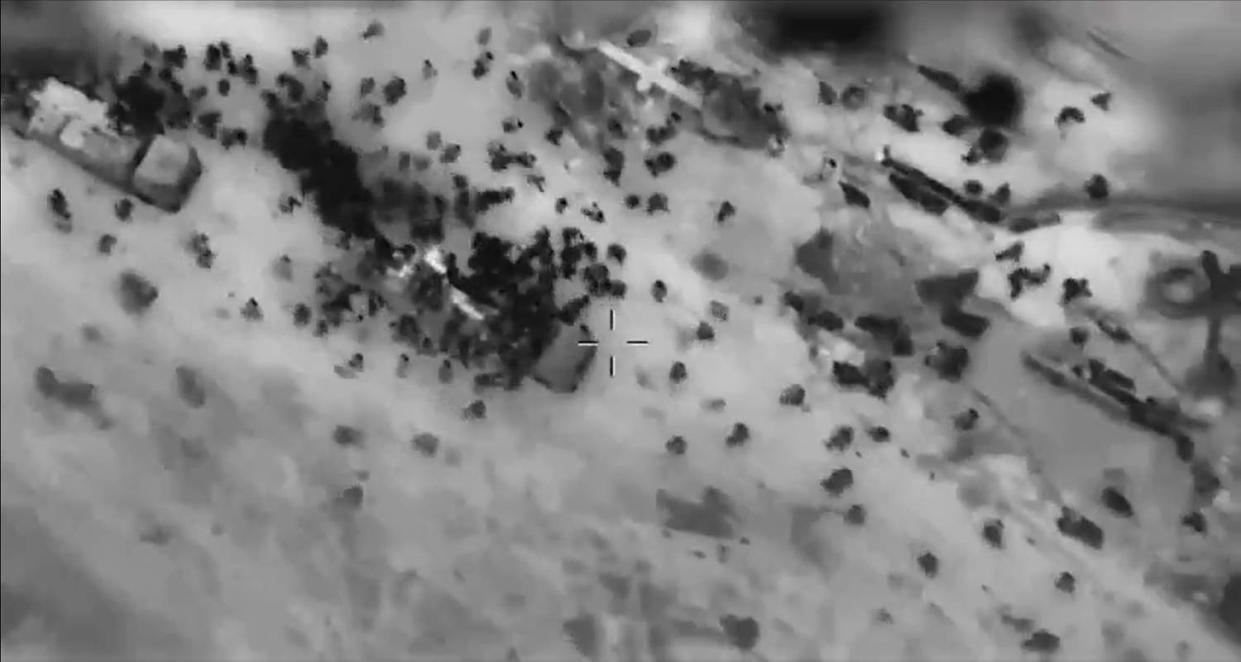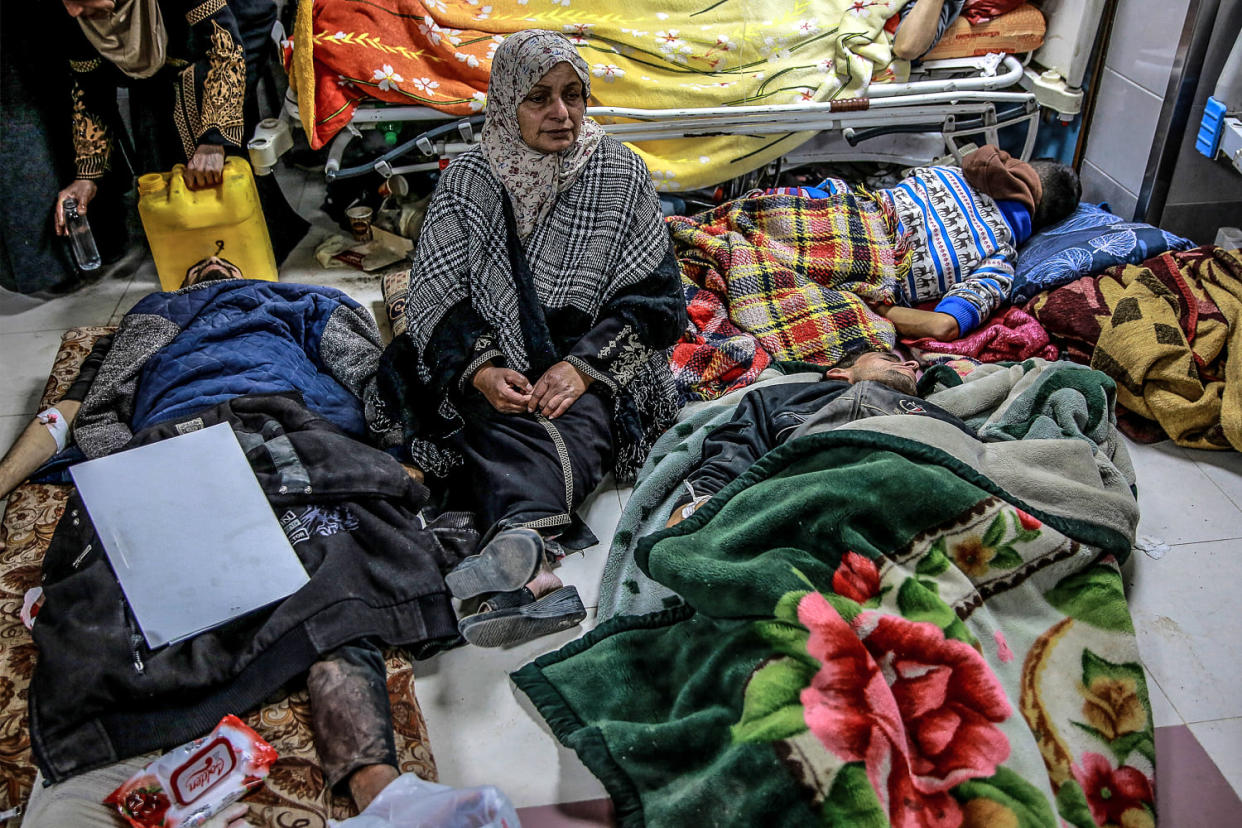How an attempt to deliver aid in Gaza descended into deadly chaos
Authorities in Gaza call it a massacre. The Israeli military maintains its forces were acting in self-defense.
In the early hours on Feb. 29, thousands of Palestinians gathered on a stretch of seaside road in Gaza City to receive a much-anticipated aid shipment.
By dawn, over 100 were dead and hundreds more injured, according to Gazan health authorities. The Israeli military says the majority were trampled or run over in the chaotic surge on the 30 trucks, but witnesses say the civilians were killed by Israeli soldiers, shot by gunfire and tank artillery shells.
Israel “lies about the flour massacre,” Salama Maroof, head of the government media office in the Gaza Strip, wrote on X on March 3, asserting that people who died and were wounded “were hit by bullets from its tanks, and some of them were shot by more than one bullet.”
For many the incident turned up the international outrage at the war’s humanitarian cost, as deadly force appeared to have been deployed against a desperate and hungry civilian population.

NBC News used open-source video filmed at the scene, clips of drone footage released by the Israel Defense Forces, footage from NBC News’ crew in Gaza, and 10 interviews by phone and on the ground with eyewitnesses and health workers at Al-Shifa Medical Complex, where some of the several hundred casualties were taken, to piece together what happened over a mile-long stretch of road in the hours before dawn that day.
Frustration has long been mounting against the Israeli military for what many see as its role in severely restricting aid at border crossings and with ongoing aerial bombardments and ground operations that have made it difficult, and often impossible, to deliver aid.
The day before, talk circulated among Gaza City’s residents about an aid convoy arriving overnight. Crowds of people began to gather in Sheikh Iljin, a beach neighborhood in the city’s south. Down the coastal boulevard of Al-Rashid Street, eyewitnesses said that by nightfall, thousands of people had gathered, clustered around bonfires.
This convoy was unusual. Rather than being delivered by the United Nations or another international aid agency, it was arranged by Palestinian businessmen and escorted by Israeli tanks “to secure the humanitarian corridor,” according to IDF spokesperson Rear Adm. Daniel Hagari. He said in a filmed statement later on Feb. 29 that aid had been delivered this way the previous four days.
An IDF review of the events released March 8 aligned with the timeline witnesses gave NBC News, saying that the convoy and accompanying tanks crossed the checkpoint at 4:29 a.m., and a minute later, troops fired “warning shots” east, followed by opening “fire toward suspects a few meters away” from an IDF tank.
However, the accounts diverge about the nature and intensity of the shooting, and how people were killed and injured.
When the crowds continued to advance, the IDF said in a statement on Friday, soldiers perceived them as a threat, and “the troops fired precisely toward a number of the suspects to remove the threat.”
Shukri Filfil, a local videographer who was at the scene, said he arrived at the Al-Nabulsi roundabout on Al-Rashid Street, along with a crowd of about 70 people, just after 4 a.m. Shortly before the food trucks arrived at 4:28 a.m, he said, Israeli tanks began to move into the area. Then the shooting started, Filfil said.
“The shooting was continuous for around three minutes, nonstop,” he said. Panic swelled as the shooting intensified, according to multiple witness accounts and video.
Filfil said he hid behind a block and heard people screaming, “A tank, a tank, it is still here,” as a stampede surged.
Gaza’s Health Ministry said 118 people were killed and more than 700 wounded.
The IDF did not respond to a request for comment from NBC News about the allegations from the U.N., doctors, eyewitnesses and health authorities that most of the injuries were caused by shooting, rather than trampling as the IDF suggested.
After a flurry of separate, sometimes contradicting accounts of what happened, the IDF later that same day released a sequence of silent, shortened video clips of thermal imagery drone footage in black and white that appeared to show crowds rushing toward aid trucks and then dispersing in different directions. NBC News was able to geolocate the footage to Al-Rashid Street south of Al-Nabulsi roundabout, but could not independently confirm the date of filming.
In the first clip, the drone pans along the street and zooms in and out on large numbers of people crowding around what look like several aid trucks, while others mill around nearby. The next clip shows a different stretch of the same road, with aid trucks traveling northward along the left lane and stationary IDF tanks in the right.

Viewers do not see what happens between the two clips, but by the second clip, multiple bodies are visible on the ground between the trucks and IDF tanks, several lying close to, in front of and between the two tanks visible in the footage. It is not clear whether the people are injured or dead.
The footage then cuts to a third clip that shows people rapidly moving away from the aid trucks. Some appear to be crawling as they head in the direction of the beach, toward lower ground. A final, blurrier segment shows another aid truck driving but completely surrounded by people, with some on its roof as it moves.

NBC News requested the unedited drone footage from the IDF, which it did not provide.
Aligning with the accounts of eyewitnesses, footage released by Al Jazeera shows people climbing over sandbanks toward safety amid the sound of gunfire. Red streaks of tracer ammunition, used to help soldiers aim, are seen several times above the crowd. NBC News geolocated the video to about 200 yards south of the roundabout, but could not determine the exact time it was filmed.
Filfil said gunfire from the tanks caused a stampede as people fled to safety.
He added that although there was a stampede, those “always” occurred around the arrival of food trucks. The crowd that morning, he said, was “less people than usual” due to the trucks’ late arrival.
“It was as a result of the continu[ous] shooting,” he said, referring to the scale of death.
An NBC News crew filmed the grim aftermath at daybreak. Injured people were transported by donkey cart or carried on wooden pallets. Others were laid out onto the flatbed of an aid truck repurposed to carry those who were killed.
Momin Abuowda, a Gaza City resident, told NBC News he saw abandoned bags of flour soaked in blood. A video shared on social media showed a man sifting through the sand, trying to salvage some grains of rice.
The next day, a doctor and eyewitnesses who spoke to NBC News disputed Israel’s account of the scale of the shooting, reporting seeing hundreds of victims of gunshot wounds and exploding artillery shells at local hospitals.
“Most of these injuries were the result of gunshots, injuries as a result of explosions of artillery shells and tank shells,” said Dr. Mohmmed Mahmoud Eghrad, an emergency room doctor at Al-Shifa Medical Complex, Gaza’s largest hospital.
The injuries he saw were not consistent with “pushing or trampling,” he added, estimating that 70% of them would require surgery medics were unable to perform due to the lack of medical supplies at the hospital.
Though doctors and witnesses discussed artillery injuries, the IDF did not mention the use of artillery shelling in the incident on Feb. 29 and did not respond to a request for comment about the use of tank artillery.
Israeli-manufactured Merkava tanks are widely used by the IDF, which are equipped with 120 mm tank guns, along with a machine gun and a rocket launcher, said retired Army Lt. Gen. Stephen Twitty, a former deputy commander of U.S. European Command.
As they exit the muzzle, 120 mm artillery shells explode into thousands of fragmentsOne manufacturer described the shells as capable of “devastating anti-personnel lethality.”
Zaid Abed Alal, 36, from Gaza City, who was injured in the incident, was told by doctors at Al-Shifa that he had multiple fractures, both in his ankle and in his upper legs.
“I took a tank shell at the bottom of my foot. It penetrated up and took the flesh and the bones,” he said, showing NBC News his leg. He worried that it would have to be amputated, and added that bullets from two other gunshot wounds remained inside his body.
“All this just for a sack of flour,” he said.

Georgios Petropoulos, a U.N. aid worker who heads the Gaza office, said he saw more than 200 people injured at Al-Shifa, many of them with gunshot wounds and amputations, as well as injured children as young as 12.
The U.N.’s spokesperson for the secretary-general, Stéphane Dujarric, said their teams found that a “large number” of the victims had been injured by gunshots, although he did not specify how many as they had not, at that point, inspected the bodies of those who had died.
On March 2, the IDF said it was launching an investigation to “reduce the risk of such a tragic incident from occurring again.”
Israel continues to escort aid convoys into Gaza. And by March 2 Gazan health authorities said dozens of people had been killed in an incident surrounding an aid convoy at Kuwaiti roundabout, also in Gaza City. Another two days later, the IDF confirmed that it again had fired on people surrounding an aid convoy, “in order to disperse the crowds” of Gazans scrambling for aid.
